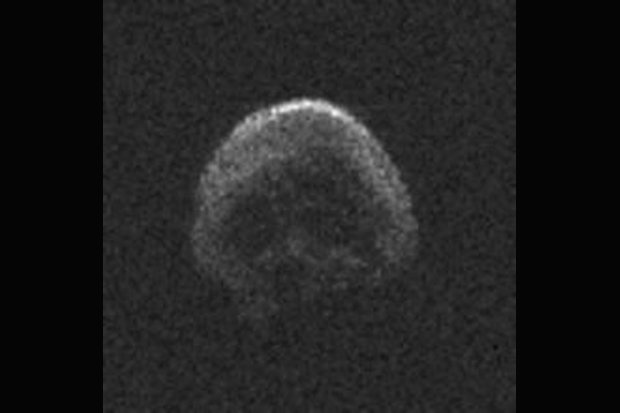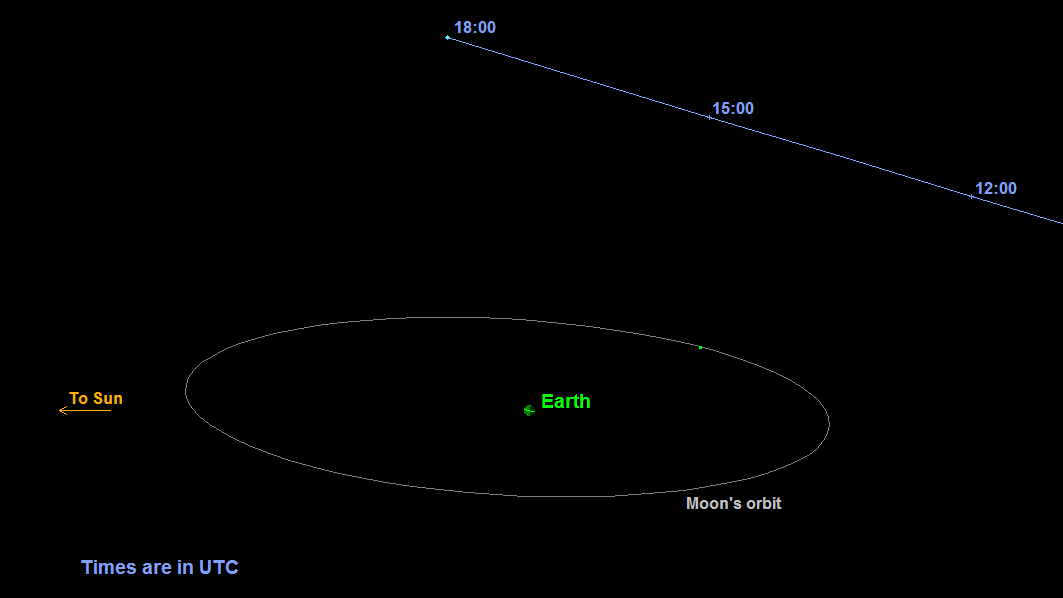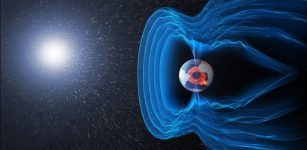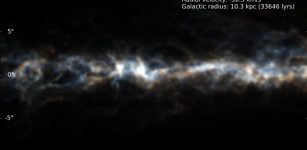The “Great Pumpkin” Is Coming – Spooky Skull-Like Asteroid Will Fly By Just In Time For Halloween!
MessageToEagle.com – Something strange will appear in the skies this Halloween, and it’s not a witch on a broomstick. NASA says an asteroid dubbed the “great pumpkin” will fly by Earth on Oct. 31 at 1:01 p.m. E.T. What is unusual about this particular asteroid is that it resembles a skull, it’s scary.
NASA scientists are now tracking the upcoming Halloween flyby of the Great Pumpkin or rather asteroid 2015 TB145 as it is officially called with several optical observatories and the radar capabilities of the agency’s Deep Space Network at Goldstone, California. Asteroid 2015 TB145 will safely fly by our planet at just under 1.3 lunar distances, or about 302,000 miles (486,000 kilometers), on Halloween (Oct. 31) at 1 p.m. EDT (10 a.m. PDT, 17:00 UTC).
The large space rock that will zip past Earth this Halloween is most likely a dead comet that, fittingly, bears an eerie resemblance to a skull. “The IRTF data may indicate that the object might be a dead comet, but in the Arecibo images it appears to have donned a skull costume for its Halloween flyby,” said Kelly Fast, IRTF program scientist at NASA Headquarters and acting program manager for NASA’s NEO Observations Program.

Credit: National Astronomy and Ionosphere Center (Arecibo Observatory)
Scientists are treating the flyby of the estimated 1,300-foot-wide (400-meter) asteroid as a science target of opportunity, allowing instruments on “spacecraft Earth” to scan it during the close pass.
The belated comet has also been observed by optical and radar observatories around the world, providing even more data, including our first close-up views of its surface.
“The trajectory of 2015 TB145 is well understood,” said Paul Chodas, manager of the Center for Near Earth Object Studies at NASA’s Jet Propulsion Laboratory, Pasadena, California.
“At the point of closest approach, it will be no closer than about 300,000 miles — 480,000 kilometers or 1.3 lunar distances. Even though that is relatively close by celestial standards, it is expected to be fairly faint, so night-sky Earth observers would need at least a small telescope to view it.”
The gravitational influence of the asteroid is so small it will have no detectable effect on the moon or anything here on Earth, including our planet’s tides or tectonic plates.

“The close approach of 2015 TB145 at about 1.3 times the distance of the moon’s orbit, coupled with its size, suggests it will be one of the best asteroids for radar imaging we’ll see for several years,” said Lance Benner, of JPL, who leads NASA’s asteroid radar research program. “We plan to test a new capability to obtain radar images with two-meter resolution for the first time and hope to see unprecedented levels of detail.”
“The asteroid’s orbit is very oblong with a high inclination to below the plane of the solar system,” said Benner. “Such a unique orbit, along with its high encounter velocity — about 35 kilometers or 22 miles per second — raises the question of whether it may be some type of comet. If so, then this would be the first time that the Goldstone radar has imaged a comet from such a close distance.”
So, look up and look out for the Great Pumpkin!
You can watch the event live here
MessageToEagle.com
References:










